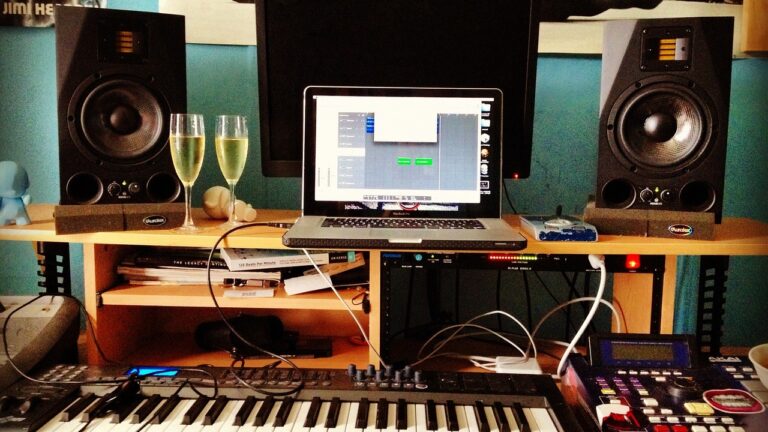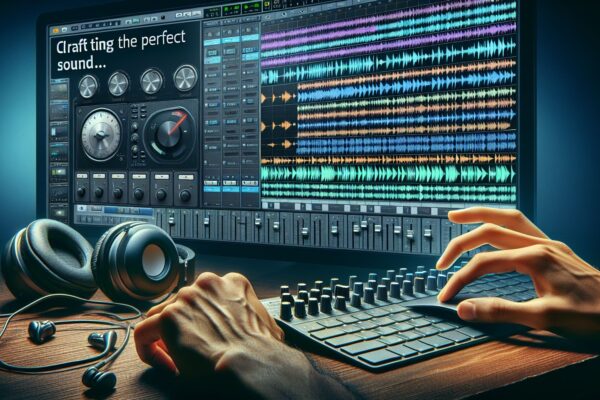Music has been a powerful form of expression since the dawn of civilization. Whether it’s an uplifting melody, a heart-wrenching ballad, or an energetic dance track, music has the unique ability to evoke emotions and transport us to different worlds. As a musician or artist, you have the incredible opportunity to create your own musical masterpieces and share them with the world. In this blog post, we will delve into the fascinating realm of music production, exploring the tools, techniques, and instruments that can help you unleash your creativity.
The Evolution of Music Production
The world of music production has undergone a revolutionary transformation in recent decades. Gone are the days when musicians had to rely solely on traditional instruments to create their songs. While instruments such as guitars, pianos, and drums still play a significant role, new technologies have pushed the boundaries of what is possible in music production.
Electronic music has become increasingly popular, bringing forth a whole new set of tools and techniques. The rise of audio software, commonly known as DAWs (Digital Audio Workstations), has revolutionized the way musicians produce, edit, and mix their tracks. These digital platforms provide an array of features, from virtual instruments and MIDI sequencing to audio editing and effects processing.
The Power of Electronic Instruments
One of the most captivating aspects of music production is the vast array of electronic instruments at your disposal. Whether you’re a fan of warm analog sounds or cutting-edge digital timbres, there’s an instrument out there that can help you achieve your desired sonic palette.
Sequencers have long been a staple in electronic music production. These devices allow you to program and arrange note patterns, creating rhythmic and melodic sequences that form the backbone of your songs. From classic hardware sequencers to modern software-based counterparts, the possibilities are endless.
Similarly, drum machines have played a crucial role in shaping the sound of electronic music. These versatile instruments enable you to craft grooves, beats, and percussion patterns with precision and finesse. Whether you’re aiming for the vintage sounds of the iconic Roland TR-808 or the cutting-edge capabilities of modern drum machines, these tools are a must-have in your arsenal.
The Rise of Beat Making and Hip Hop Instrumentals
In recent years, beat making and hip hop instrumentals have taken center stage in the music industry. With their infectious rhythms and catchy hooks, these genres have captivated audiences worldwide. If you’re looking to dive into the world of beat making, you’ll need to master some essential techniques.
Sampling is a key element in beat making, allowing you to take snippets of existing music and incorporate them into your own compositions. However, it’s essential to ensure that you have the necessary rights or permissions before using any copyrighted material.
Drum programming is another crucial skill in beat making. The rhythm, groove, and swing of your drum patterns can make or break a track. Experiment with different drum sounds, velocities, and accents to create a unique rhythm that drives your music forward.
Bringing It All Together: Music Production Process
Now that you have a glimpse into the exciting world of music production and the various tools available, let’s explore the process of bringing it all together.
-
Pre-production: This phase involves conceptualizing your ideas, organizing your musical elements, and creating a blueprint for your composition. Experiment with different chord progressions, melodies, and song structures to find the perfect balance.
-
Recording and sequencing: Once you have your musical ideas in place, it’s time to start recording and sequencing your tracks. Whether you’re using real instruments, virtual instruments, or a combination of both, ensure that your recordings are clean and well-executed. Experiment with different layers, textures, and effects to add depth to your sound.
-
Mixing and mastering: The mixing stage is where you bring all the individual elements of your track together, ensuring that each instrument and sound is balanced and properly EQ’d. Mastering, on the other hand, focuses on adding the final polish to your music, making it sound cohesive and professional.
-
Release and promotion: Once your track is ready, it’s time to release it into the world. Upload it to your preferred platforms, create eye-catching visuals, and engage with your audience through social media. Collaborate with other artists, join online communities, and seize every opportunity to share your music with the world.
Unleash Your Creativity, One Beat at a Time
As you embark on your music production journey, it’s essential to remember that creativity knows no boundaries. Embrace new technologies, experiment with different techniques, and allow your imagination to run wild. Music production is both an art and a science, combining technical expertise with artistic expression. So, go ahead and create masterpieces that touch the hearts and souls of your listeners.
Whether you’re drawn to the captivating sounds of electronic music, the infectious beats of hip hop instrumentals, or the enchanting melodies of acoustic instruments, the world of music production awaits your creative vision. Embrace the tools, techniques, and instruments at your disposal, and let your imagination take flight. Unleash your creativity, one beat at a time, and share your unique voice with the world. Your musical journey starts now.




